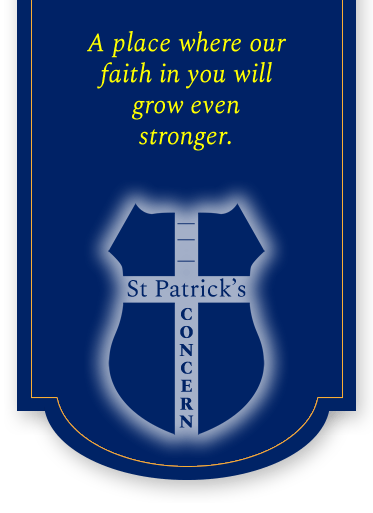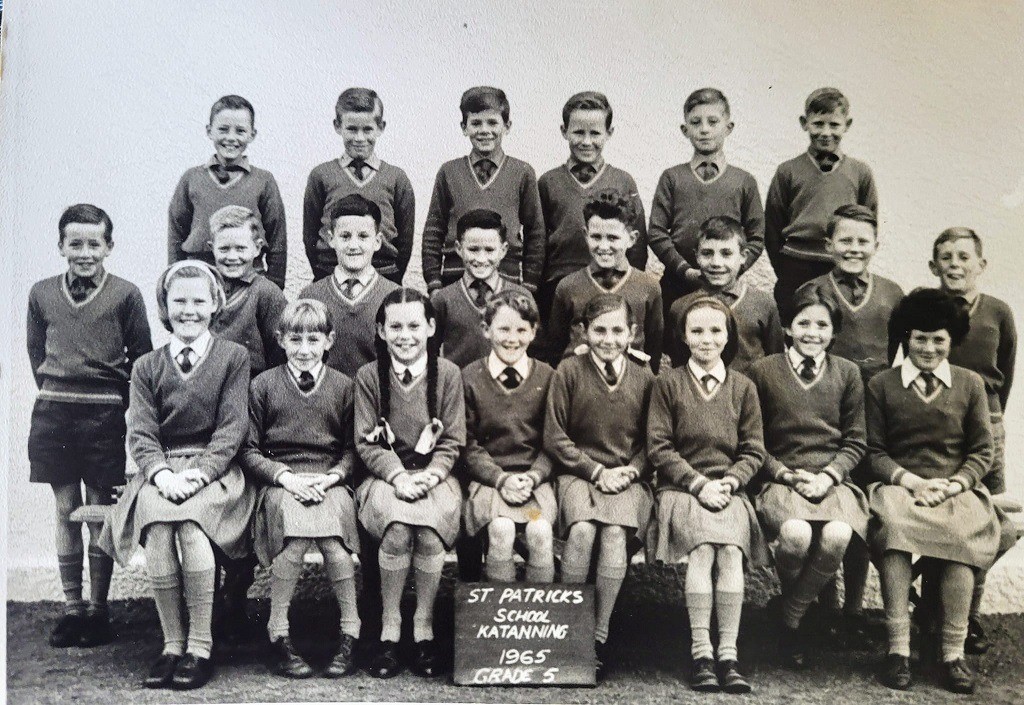Saint Patricks School. Saint Patricks School. Saint Patricks School. Saint Patricks School. Saint Patricks School.

St Patrick’s School was established in 1926 with the arrival in January of that year, of three Our Lady of the Missions sisters. The school opened on 3rd February at 9.00am with 47 pupils, and the first classes were originally located in the Church. The school finished that year with 108 pupils. The sisters continued to teach in the Church until 1927.
By then, three rooms and a verandah were built in the Church grounds, and these were opened and blessed by Archbishop Clune on 5th December 1927. These classrooms faced Annie St, and are currently the School Hall and Canteen. In 1958, two additional rooms were added, facing Amherst St, and these currently house Years 5 and 6. 1966 saw the building of the Parish Hall.
St Patrick’s School continued to grow rapidly and the building of additional classrooms, (currently Years 1, 2, 3 and 4) were completed and opened in 1975. In 1988, the current Administration Area was constructed, and 1993 saw the completion and opening of the purpose-built Pre-Primary Centre.
The most recent Building Programme, including a new classroom, a dedicated Multi-Purpose Room for the Arts, and a large Covered Area, was completed in 2004. The national BER program supported St Patrick’s with a build of a new library and administration block. More recently, the school completed the re-development and refurbishment of the Pre-Primary, Year One and toilet block area.
St Patrick’s School now operates composite classes catering for children from Kindergarten through to Year 6. There are currently 84 children attending the school with a staff of 13 comprised of 7 teachers (full-time and part-time) and 6 non-teaching staff.

St Patrick’s Primary School Class of 1965
SCHOOL FACTIONS
Prendiville Faction
Named in honour of Archbishop Redmond Prendiville, Archbishop of the Perth Archdiocese from 1935- 1968. Archbishop Prendiville was a visionary man who oversaw the rapid expansion and development of Catholic schools throughout Western Australia. Archbishop Prendiville was responsible for the capital developments that took place in parishes, and the building of schools and churches, so that Catholic education could be accessed by so many, during these years. He was said to have had a dynamic personality and a keen drive to accomplish all tasks, with excellence as his only standard. He made visitation trips to Katanning on several occasions, and many of the staff who have taught at St Patrick’s were educated themselves in colleges that were developed during Archbishop Prendiville’s time.
McLeod Faction
Named in honour of Sr Mary Bernadette McLeod, a former St Patrick’s teacher, of the order of Our Lady of the Missions. Sr Bernadette had also been a student at St Rita’s Convent (later, St Patrick’s School ) and lived in the large imposing home built by George McLeod Jnr on Clive St, that is now owned by the Ogden Family. Sr Bernadette’s father, was a prominent member of the then Katanning Roads Board (Shire) and President at times.
Prior to the existence of St Rita’s, Sr Bernadette had been educated at the government school, but children always made their way back to her home after school to enjoy many happy hours of play.
Sr Bernadette is remembered by some of St Patrick’s parishioners for her firm, but fair discipline and her passion for educating young people with encouragement and a desire to achieve greatness in all that was tackled.
Gibney Faction
Named in honour of Bishop Matthew Gibney, Bishop of the Perth Archdiocese, from 1889-1910. He laid the foundation stone of the first Roman Catholic Church in Katanning. Bishop Gibney had actively encouraged the local priest, Father Duff, in his tireless efforts to build a Church in Katanning. It was to become the first Catholic Church located between Albany and Beverley.
Bishop Gibney promptly donated fifty pounds and arranged a loan of a further fifty pounds towards the estimated six hundred pounds that was needed to complete the project.
Bishop Gibney was known as a keen sportsman, with a particular interest in golf. Whilst holidaying in Victoria, Bishop Gibney encountered the drama of Glenrowan and Ned Kelly’s last stand. Bishop Gibney did not administer the last rites to Ned Kelly, as has been rumoured, but certainly was warned by Ned not to approach the burning buildings, for fear that he would be mistaken by other gang members as a trooper, and would be shot. Bishop Matthew Gibney, was laid to rest in 1925 at his request, in St Mary’s Cathedral Perth. Recent renovations to St Mary’s Cathedral in Perth, brought this resting place to prominence.
